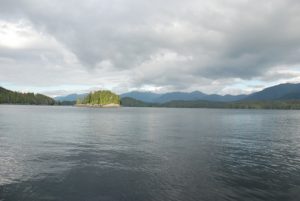The People Take on Monsanto for Crimes Against Humanity in International Tribunal
Lorraine Chow
October 13, 2016
Starting tomorrow, 30 witnesses and legal experts from five different continents will testify before five international judges at the three-day Monsanto Tribunal in The Hague, Netherlands. Their testimonies will attempt to hold the agrochemical giant accountable for their alleged “crimes against humanity” and destruction of the environment, or “ecocide.”
Monsanto Tribunal organizers have called Monsanto’s Roundup “the source of the greatest health and environmental scandal in modern history.”
This symbolic trial, which will be live streamed from Oct. 15, 8:30 a.m. GMT+2 on the tribunal website, will follow guidelines of the United Nations’s international court of justice and will have no legal standing. Rather, its purpose is to gather legal counsel from the judges as well as legal grounds for future litigation.
“The aim of the tribunal is to give a legal opinion on the environmental and health damage caused by the multinational Monsanto,” the tribunal organizers state on their website. “This will add to the international debate to include the crime of Ecocide into international criminal law. It will also give people all over the world a well documented legal file to be used in lawsuits against Monsanto and similar chemical companies.”
Monsanto, which is inching closer to a $66 billion takeover from German pharmaceuticals giant Bayer, has faced a never-ending slew of health and environmental controversies over its products since, well, the beginning of the twentieth century.
Monsanto’s historical line-up of products includes banned and highly toxic chemicals such as 2,4,5-trichlorophenoxyacetic acid (a dioxin-containing component of the defoliant Agent Orange); PCBs (polychlorinated biphenyl); and Lasso, a herbicide banned in Europe. Glyphosate, the controversial main ingredient in Monsanto’s best-selling weedkiller RoundUp, is the most widely used pesticide in the world. Monsanto is also the world’s largest genetically modified (GMO) seed maker, giving them a major hand over the world food supply.
The trial, which will proceed on the same weekend as World Food Day, is organized by Organic Consumers Association, International Foundation for Organic Agriculture (IFOAM) Organics International, Navdanya, Regeneration International, Millions Against Monsanto as well as dozens of global food, farming and environmental justice groups.
Tribunal organizer Vandana Shiva is an outspoken critic of Monsanto. “Monsanto has come to be seen as one of the most dangerous corporations on the planet,” the physicist, author, activist and founder of Navdanya said in a statement.
“It has earned this reputation through a history of producing products toxic to humans and the environment, as well as well-documented manipulation of scientific evidence, disingenuous PR efforts and applying relentless political pressure worldwide to promote its products. Life, society and democracy are under threat. We refuse to allow this future to unfold.”
Andre Leu, president of IFOAM, said, “Monsanto is able to ignore the human and environmental damage caused by its products, and maintain its devastating activities through a strategy of systemic concealment: by lobbying regulatory agencies and governments, by resorting to lying and corruption, by financing fraudulent scientific studies, by pressuring independent scientists, and by manipulating the press and media. Monsanto’s history reads like a text-book case of impunity, benefiting transnational corporations and their executives, whose activities contribute to climate and biosphere crises and threaten the safety of the planet.”
Monsanto will not be present at the trial, calling it a “staged” event organized by the organic food industry “where the outcome is pre-determined.”
“As this is a stunt staged and supported by the International Foundation for Organic Agriculture (IFOAM)—an umbrella organization of organic agriculture organizations, and their associates such as Navdanya and others who are fundamentally opposed to modern agriculture—we will not participate,” states an open letter signed by the company’s Human Rights Steering Committee.
“To address these ever increasing challenges collaboratively and advance our commitment to human rights, we welcome a genuine constructive conversation with diverse ideas and perspectives about food and agriculture production,” the letter also states. “These conversations are much needed to help find sustainable solutions to those challenges.”
Tribunal organizers have responded to Monsanto’s allegations of a mock court. “Other similar tribunals have found both for and against corporations,” Damien Short, director of the Human Rights Consortium at London University, told The Guardian. “This is a test of international law. It has moral force and the tribunal’s decision will be evidence-based. Peoples’ tribunals are testing the law.”
“Under existing [international] law, it is impossible to bring criminal charges against a company like Monsanto or its management, for possible crimes against human health and the integrity of the environment,” Lucy Rees, speaking on behalf of End Ecocide on Earth, also told the publication.
Greenpeace has been a vocal supporter of the tribunal. “The industrial scale of agriculture today has broken our food system,” the environmental group said. “Giant agri-businesses fail to take into account the health of the environment and the communities who depend on it. Monoculture and dependence on chemical fertilizers and pesticides are taking its toll on the planet, animals and us.”
According to a tribunal newsletter, witnesses and experts who will be present at the trial includes health experts, “victims” and representatives from communities affected by the spraying of pesticides in Argentina, Brazil, Colombia, France, India, Sri Lanka and Paraguay; farmers and seed savers from Australia, Bangladesh, Burkina Faso, Canada, France; beekeepers from Yucatan, Mexico; and scientists from Brazil, Germany, France, the UK and the U.S. Former UN special rapporteur on the right to food Olivier De Schutter will also testify.

 We’ve gone Ultra-Sonic.
We’ve gone Ultra-Sonic.



 Outrage is the only word for what people are feeling after a tug and fuel barge, owned by Texas-based Kirby Offshore Marine, crashed on rocks in the heart of B.C.’s Great Bear Rainforest on October 13. It’s been leaking 200,000 litres (59, 024 gallons) of diesel fuel into the sensitive marine ecosystem ever since.
Outrage is the only word for what people are feeling after a tug and fuel barge, owned by Texas-based Kirby Offshore Marine, crashed on rocks in the heart of B.C.’s Great Bear Rainforest on October 13. It’s been leaking 200,000 litres (59, 024 gallons) of diesel fuel into the sensitive marine ecosystem ever since.